|
Rotten Library > The Occult > Sacred Geometry
Sacred Geometry
Sacred geometry is the art, or perhaps the science, of imposing structure onto something that is inherently intangible. Since people first learned to scrawl in the dirt with sticks, they have been drawing shapes and calling those shapes "God."
Primitive The earliest known symbol of spirituality is the spiral. Ancient cave artists scrawled simple spirals on the walls of their homes, for reasons which have not been preserved in written language, but at which we can guess.
The earliest known symbol of spirituality is the spiral. Ancient cave artists scrawled simple spirals on the walls of their homes, for reasons which have not been preserved in written language, but at which we can guess. The spiral is the simplest and most common geometric shape shape in nature, both visibly and invisibly. From conch shells to weather patterns to DNA to galaxies to hallucinogenic visions, spirals are omnipresent in nature. Whether the cave artists were driven by mystical inspiration or simple observation, the emergence of the spiral in animistic, shamanistic and nature-worshipping cultures is not surprising. After the spiral, things moved for a while along fairly predictable lines of increasing geometric complexity. Sun and moon icons brought circles into the realm of sacred geometry, predictably, as primitive pantheons expanded to include sun and sky gods.
The more you understood about what happened in the sky, the better your odds of survival. Which leads you to math. To really exploit the sky for all it's worth, you need math. You need to be able to count. You need to be able to calculate cycles. You need to plot movements for navigation using the stars. Thus, geometry. Post-spiral, almost all of the earliest examples of sacred geometry are somehow tied to navigation and the calculation of the seasons. Early edifices like Stonehenge are essentially giant calendars, with rocks and markings situated to indicate seasonal passages based on where the sun casts its shadows. Other paleolithic monuments might frame a star or the sun or moon as if through a gun sight.
The pyramids were build along strict lines and proportions, oriented to compass points and astronomical coordinates (which allowed them at times to function as giant calendars in the same way Stonehenge did). The major Egyptian pyramids were built about 5,000 years ago. They are generally thought to have been massive tombs for Egyptian royalty, designed to shepherd their occupants into the afterlife with style. This included the kind of fabulous wealth that made the pyramids more than a tourist attraction. As the original civilization that built the pyramids mutated into something else, the monuments remained, eventually gaining considerable mystique. Today, there is wild and rampant speculation about what the pyramids mean, and what their geometric patterns are meant to achieve. In the 1970s, a brief pyramid craze erupted as New Age believers adopted the view that the shape itself was responsible for the preservation of mummies (in reality, the Egyptian's elaborate enbalming techniques deserved the credit).
For another thing, the pyramids were... well, they're just so damn big. Their actual construction is still something of a mystery, although the brutal exploitation of thousands of slaves may have had something to do with it. Then there were the other pyramids. Starting around 800 B.C. or so, the Aztec and Mayan civilizations in Central and South America were building pyramids of their own. While stylistically different, there were striking similarities in both style of construction and geometry. There is no credible theory at the moment which would explain the movement of architectural information between the Egyptians and the Aztecs. There are three possible explanations for the similarities: 1) People had pyramids somehow hardwired into their brains (there is no scientific evidence to support this notion), 2) Pyramids were first built by an original unified prehistoric human civilization that later dispersed over the world, spreading its architecture with it (there is no scientific evidence to support this notion), or 3) Aliens told people to build pyramids (there is no scientific evidence to support this notion, but there are some rather funky Mayan pictograms that look like people flying rocket ships).
IntermediateAs civilization went on, the early connection between geometry and spirituality remained in the minds of more "advanced" peoples. These manifested themselves in a variety of ways.The Mayans developed an inconceivably complicated calendar system. The Mayan calendar, depicted as an elaborate chart of pictograms, covered every significant and predictable astronomical event over a 10,000 year period. The cycle represented the current aeon of existence, and the calendar simply ends on Dec. 21, 2012, at which point the entire universe could simply come to an end. Around 350 B.C., Plato discovered the Platonic solids, which was no coincidence. The platonic solids numbered five, cubes, tetrahedrons, octohedrons, icosahedrons and dodecahedrons. That's a lot of hedrons! The Platonic solids were associated with the "elements," as they were known to early man, earth, air, fire and water, which later took on spiritual significance.
A few hundred years after that, in southern and southeastern Asia, the mandala was invented somewhere in between Buddhism and Hinduism. The I-Ching and the mandala represented a major step forward in the concept of "Sacred Geometry," because they were efforts to depict abstract concepts such as time, higher dimensions and higher states of consciousness, rather than the simple charting of physical phenomena found in earlier efforts.
This concept became further developed as the kabala was first defined around the time of Christ. A branch of Jewish mysticism, kabala was a metaphysical system for understanding the universe that extended from deep mathematical roots, related to the numerical values of the Hebrew alphabet. The kabala developed into a complex system of correspondences, magic numbers and charts. Medieval occultists used the diagrams and concepts of the kabala to create elaborate magic rituals. Similar charts would pervade Magic practice, Witchcraft and other metaphysical systems for the next several hundred years, ranging from the pentagrams used by witches and occultists to vevers used in Voudoun to invoke loas.
AdvancedIn a rather shocking development, the onset of the scientific era in the 19th and 20th century uncovered numerous correspondences between the structures of sacred geometry and the new discoveries of science. For instance, the I-Ching's 64 hexes correspond to the 64-codon structure of human DNA, in a more precise way than the earlier spirals aped the shape of its strands.The higher dimensional math underlying the structure of the mandala turned out to be reflective of the higher dimensional math innovated by Albert Einstein and subsequently explored by quantum physicists. The kabalistic Tree of Life, with its ten "sephiroth" and one hidden sephiroth could be drawn as a correspondence to the 11-dimensional universe postulated in string theory, while other kabalistic treatises on the nature of spirit and body turned out to be pretty direct parables about the relationship between energy and matter laid out in the theory of relativity. Voudoun vevers also reflect those numerical schemes.
After an initial run of popularity in what passed for medieval "science" (simply another word for metaphysics), the cosmic importance of the Golden ratio was left in the dust along with notions like the "flat earth," as real science slowly emerged, but it staged an unlikely comeback. The more people learned about the universe, the more spirals they found, in places ancient people couldn't have imagined — the structures of galaxies, the event horizons of black holes, even the molecular components of life. The new spirals were often organized by a different principle. In the 19th century, mathematicians had begun to dream up theories about irrational numbers, which are numbers and equations which can't be solved to a single simple answer in the manner of 2+2=4. They speculated that these irrational numbers, called fractals, could be charted to reveal massively complex structures, but they lacked a way to create these complicated diagrams. It wasn't until the 1970s that anyone could see what these fractals looked like. When a mathemetician named Benoit Mandelbrot developed an extensive theory around fractals, he used newfangled computers to graph the complex systems. The results were stunning.
Between chaos theory and the near-magical world of quantum physics, it was beginning to look like the early sacred geometrists were actually on to something. Concepts such as time travel and miraculous transformations akin to alchemy were suddenly very real. Furthermore, the combination of chaos theory and quantum physics offered a nearly plausible explanation for how magic, witchcraft and psychic phenomena could actually work, at least in theory. Some aggressively speculative thinkers like Terence McKenna have developed elaborate explanations for how the I-Ching works with fractal time and the Mayan calendar, but we're veering away from the consensus reality definition of "science" at this point, so let's get back on topic. Chaos theory offers tantalizing clues to where all these sacred geometry concepts might have come from in the first place. The brain is clearly a complex system, literally grown from a fractal DNA root, and there is an emerging scientific school of thought that believes the abstract construct we refer to as consciousness is also fractal.
Of course, the flipside of this notion is that — in theory — if someone managed to solve the probably very simple equation that underlies all this mathematical complication, they could in theory create a computer model of everything — including your brain and all its dirty little secrets and every lousy thing you ever did or might ever do. And once John Ashcroft gets a copy of that, well, you can kiss your fractal ass goodbye...
None of this answers why the hell an Illuminati pyramid is on the back of the dollar bill, but then that's a whole different kettle of fish.
|

 It took longer for the concept of "geometry" as inherently "sacred" to develop, but not as long as you would think. Pre "civilized" people were understandably obsessed with the sky. After all, the sky was the source of rain and sun, lightning, hail and the changing seasons, all of which qualified as life-and-death issues for people who lived off the land, hadn't invented GPS (or even compasses) and hadn't started building houses in which to seek shelter from all of the abovementioned sky-based death-bombs.
It took longer for the concept of "geometry" as inherently "sacred" to develop, but not as long as you would think. Pre "civilized" people were understandably obsessed with the sky. After all, the sky was the source of rain and sun, lightning, hail and the changing seasons, all of which qualified as life-and-death issues for people who lived off the land, hadn't invented GPS (or even compasses) and hadn't started building houses in which to seek shelter from all of the abovementioned sky-based death-bombs. 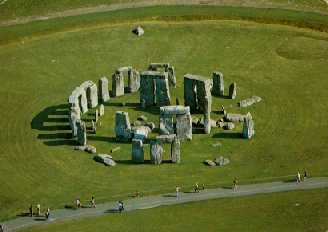 As the paleolithic era ended, people started applying the new math to their construction projects. The pyramids are the most notable of these efforts, even today. Aside from the sheer muscle-power required to actually build the damn things, the mathematical discipline in creating the shapes was pretty remarkable.
As the paleolithic era ended, people started applying the new math to their construction projects. The pyramids are the most notable of these efforts, even today. Aside from the sheer muscle-power required to actually build the damn things, the mathematical discipline in creating the shapes was pretty remarkable. 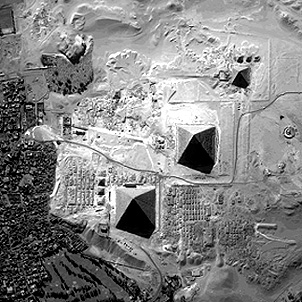 The pyramids also provoked the people of the 20th century to wonder about extraterrestrial intervention in the early history of humanity, for a number of reasons. For one thing, the edifices were mathematically pristine, and modern people tend to labor under the impression that any society without Must-See-TV can barely call itself civilized, let alone count or multiply.
The pyramids also provoked the people of the 20th century to wonder about extraterrestrial intervention in the early history of humanity, for a number of reasons. For one thing, the edifices were mathematically pristine, and modern people tend to labor under the impression that any society without Must-See-TV can barely call itself civilized, let alone count or multiply. 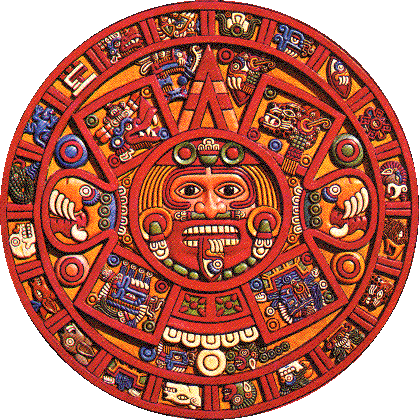
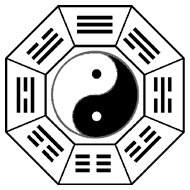 In the Far East, math structures were also becoming part and parcel of spirituality. Between the first and second millennia B.C., the Chinese developed the
In the Far East, math structures were also becoming part and parcel of spirituality. Between the first and second millennia B.C., the Chinese developed the 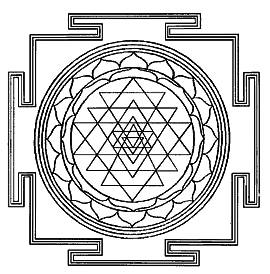 Mandalas were used in meditative practice, their structure and optical illusion qualities helping to bring practitioners of yoga into a deep trance states, another new development. The use of diagrams and structures in achieving states of consciousness and other effects would begin to dominate sacred geometry from the first millennium B.C. onward.
Mandalas were used in meditative practice, their structure and optical illusion qualities helping to bring practitioners of yoga into a deep trance states, another new development. The use of diagrams and structures in achieving states of consciousness and other effects would begin to dominate sacred geometry from the first millennium B.C. onward. 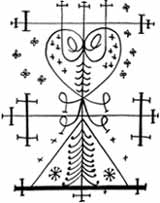
 Even the simple spiral on the cave wall found itself elevated. Humans had never lost their fascination with the spiral, and mathematicians such as Fermat and Fibonacci postulated various theories in the Middle Ages that extended the influence of the spiral far and wide. Fibonacci developed the theory of the Golden Ratio, a proportion that he claimed was at the heart of all nature and which could be used to build elaborate spirals found in nature.
Even the simple spiral on the cave wall found itself elevated. Humans had never lost their fascination with the spiral, and mathematicians such as Fermat and Fibonacci postulated various theories in the Middle Ages that extended the influence of the spiral far and wide. Fibonacci developed the theory of the Golden Ratio, a proportion that he claimed was at the heart of all nature and which could be used to build elaborate spirals found in nature.  Fractals are graphs that produce amazingly organic shapes of infinite complexity, clearly corresponding to natural processes including how embryos develop, the growth of plants, weather systems, the structure of space and time, and just about everything else too. The study of these complex systems and the relationship between math and life and time soon became a credible school of study, known as chaos theory.
Fractals are graphs that produce amazingly organic shapes of infinite complexity, clearly corresponding to natural processes including how embryos develop, the growth of plants, weather systems, the structure of space and time, and just about everything else too. The study of these complex systems and the relationship between math and life and time soon became a credible school of study, known as chaos theory.  What all this means, simply put, is that our bodies, minds, souls and even our DNA contain the unified blueprint for everything in the universe. If consciousness itself is fractal, with a mathematical base, then it stands to reason that these shapes and structures are literally hardwired into whatever it is that makes people people, whether they surface in dreams, visions or simply as a product of thinking about stuff too much.
What all this means, simply put, is that our bodies, minds, souls and even our DNA contain the unified blueprint for everything in the universe. If consciousness itself is fractal, with a mathematical base, then it stands to reason that these shapes and structures are literally hardwired into whatever it is that makes people people, whether they surface in dreams, visions or simply as a product of thinking about stuff too much.